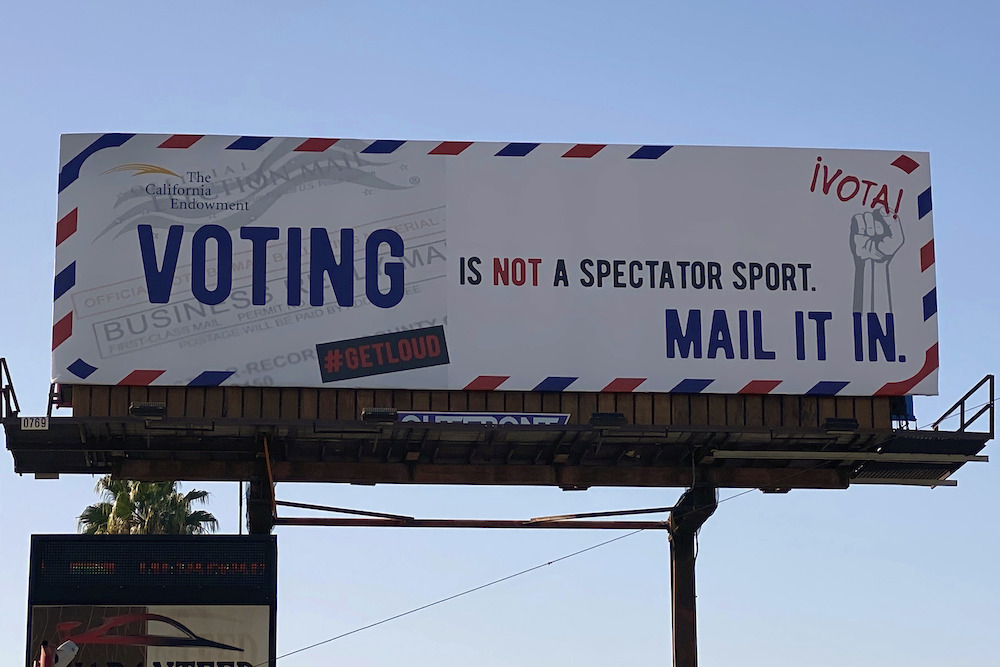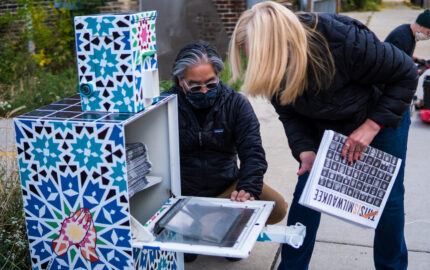No group of people has a more important role to play in shaping how Americans think about mail-in voter fraud than editors and journalists who write for local and regional newspapers, local television news, the broadcast networks, and for those who produce the syndicated news these outlets use.
My team and I at Harvard’s Berkman Klein Center for Internet and Society came to this remarkable conclusion in a report about the months-long disinformation campaign that Donald Trump and the Republican Party mounted to sow doubt about mail-in voting. We analyzed tens of thousands of online stories and Facebook posts, and millions of tweets, using network analysis, text analysis, and qualitative research. Contrary to widespread concern with Russia or Facebook as vectors of election disinformation, our findings told a different story.
Related Reading
With mis- and disinformation campaigns heating up, a vacancy on the supreme Court, and a President who refuses to commit to accepting the results, the 2020 election arrives at a period of extraordinary uncertainty and tension. Nieman Reports and Nieman Lab are publishing a collection of stories exploring how newsrooms are covering this intensely contested vote and its aftermath.
How Should Journalists Respond to Trump’s Refusal to Commit to a Peaceful Transfer of Power?
By Issac J. Bailey, Nieman Reports
The election could be contested and last for weeks after Nov. 3. Here’s what experts think journalists should know.
By Sarah Scire, Nieman Lab
Critical Coverage: Cable News and Trump’s Covid-19 Diagnosis
By Celeste Katz Marston, Nieman Reports
All peaks in attention and coverage of mail-in voter fraud were triggered by statements or actions of political elites, particularly Donald Trump through three channels: his Twitter account, press briefings, and television interviews on Fox. Trump was, in turn, reinforced by his staff, the RNC, and other Republican leaders. Social media played a secondary role, recirculating stories published by major media outlets about the actions or statements of the political actors pushing the false narrative.
President Trump perfected the art of harnessing mass media to disseminate and reinforce his disinformation campaign. As president, his statements command attention, and his frequent norms-breaking statements are like clickbait for journalists. Trump could then rely on professional media outlets to pursue balance by adopting his framing for the problem of mail-in voter fraud: That it is a matter of partisan competition, rather than a question of how to enable as many American citizens to vote as possible in the midst of a pandemic.
How should professional journalists cover these kinds of statements? Consider two different AP stories.
On May 1, the president tweeted an all caps “RIGGED ELECTIONS!” in a retweet pointing to an article reporting on a conservative legal group finding that 28 million ballots have gone missing from 2012 to 2018. Despite the fact that by May 2 ProPublica had thoroughly debunked the study underlying Trump’s tweet, the May 5 AP widely syndicated story was headlined: “Vote-by-mail debate raises fears of disinformation,” and opened with: “A bitterly partisan debate unfolding on whether more Americans should cast their vote through the mail during the pandemic is provoking online disinformation and conspiracy theories that could undermine trust in the results…”
Note that the partisan debate is (a) passive voice unfolding and (b) provoking online disinformation. While the story immediately then said “Historically, there is no evidence of widespread voter fraud through mail-in voting. But social media users are already pushing grandiose theories casting doubt on the method. President Donald Trump has encouraged the skepticism, saying during a televised briefing that ‘a lot of people cheat with mail-in voting.’ On Saturday, he tweeted: ‘Don’t allow RIGGED ELECTIONS!’”
While the first sentence is factual and important to emphasize, the reality was that it was not “social media users” who are “already pushing grandiose theories casting doubt,” but the president and the Republican Party who were doing so. The entire structure of the story, which we analyze in detail in our report, then introduced a set of general statements about hypothetical potential risks, backed by experts on Russia or Facebook misinformation, all of which in combination lend the full credence of the AP to the president’s disinformation campaign.
By contrast, when the president tweeted on July 30 that the election should be delayed, the AP took a different approach. The headline was: “Trump floats idea of election delay, a virtual impossibility.” The lede and following sentences were: “President Donald Trump, lagging in the polls and grappling with deepening economic and public health crises, on Thursday floated the startling idea of delaying the Nov. 3 presidential election. His campaign to sow doubt about the election’s outcome drew immediate pushback from Democrats and Republicans alike in a nation that has held itself up as a beacon to the world for its history of peaceful transfer of power. Trump suggests the delay as he pushed unsubstantiated allegations that increased mail-in voting due to the coronavirus would result in fraud.” Note the structure of the latter report: It emphasizes the president’s partisan strategy and prefaced reporting the president’s claims about mail-in fraud by calling them “unsubstantiated allegations.”
While many journalists are aware of the dangers of false equivalence in reporting falsehoods, acting on that awareness is difficult. Training and habit make it easier to write ‘the president and his opponents clashed again over mail-in voter fraud’ than to write ‘the president continued his disinformation campaign on Tuesday, once again falsely claiming that mail-in ballots lead to fraud, contrary to the consensus of independent studies.’
Many outlets, including the AP itself, have dealt with this tension by publishing a segregated ‘fact checking’ column. But doing so simply sweeps the problem under the rug, because that still leaves most of the main stories, when first encountered by readers, validating assertions that are not directly refuted.
This effect is particularly critical for media used by the most persuadable Americans. Fox News viewers and talk radio listeners are persuaded that voter fraud is a major concern. Readers of the New York Times or NPR listeners are not suddenly going to fall for the disinformation campaign. But it is precisely the consumers of regional and local news sites and television who are the least certain about what to think, and it is media aimed at them that can do the most good by treating disinformation correctly, and the most harm by failing to do so.
However hard it is to buck the habit of performing neutrality by asserting a false balance, the alternative to calling out falsehoods directly is not balance, but complicity. If editors and journalists are going to do their jobs as the fourth estate and hold power to account, they have to do the fact checking before the reporting, and if the president and his party are engaged in a systematic disinformation campaign, then being the fourth estate means overcoming deeply entrenched professional habits, calling the campaign what it is, and treating the falsehoods no differently than they would if their source were Russian propagandists or Facebook clickbait artists.
Yochai Benkler is the Berkman Professor of Entrepreneurial Legal Studies at Harvard Law School, and faculty co-director of the Berkman Klein Center for Internet and Society at Harvard University.



